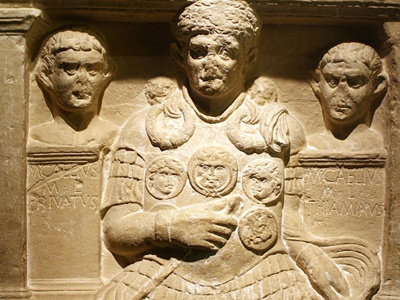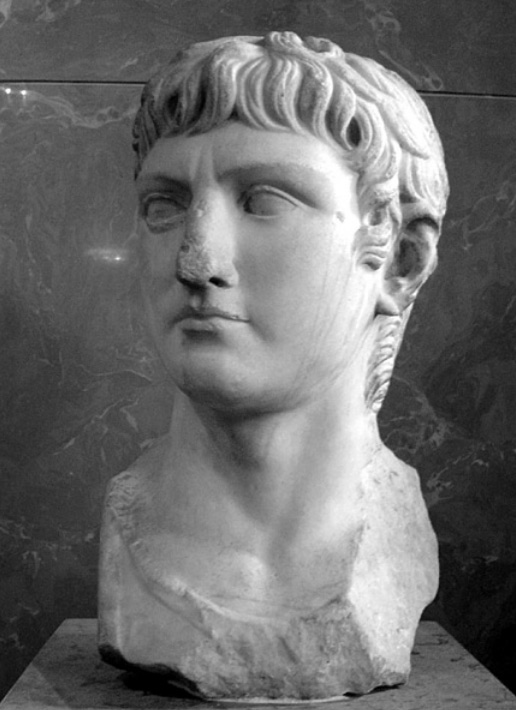Battle of the Teutoburg Forest (9 AD)
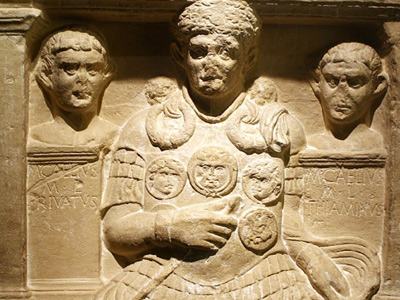
Impact on Roman Expansion
From the time of the rediscovery of Roman sources in the 15th century the Battles of the Teutoburg Forest have been seen as a pivotal event resulting in the end of Roman expansion into northern Europe. This theory became prevalent in the 19th century, and formed an integral part of the mythology of German nationalism.
More recently some scholars questioned this interpretation, advancing a number of reasons why the Rhine was a practical boundary for the Roman Empire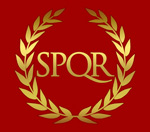 The Roman Empire was the post-Republican period of ancient Rome. As a polity, it included large territorial holdings around the Mediterranean Sea in Europe, North Africa, and Western Asia, and was ruled by emperors. The first two centuries of the Roman Empire saw a period of unprecedented stability and prosperity known as the Pax Romana ('Roman Peace'). The Empire was later ruled by multiple emperors who shared control over the Western Roman Empire and the Eastern Roman Empire., and more suitable than any other river in Germania. Logistically, armies on the Rhine could be supplied from the Mediterranean via the Rhône, Saône and Mosel, with a brief stretch of portage. Armies on the Elbe, on the other hand, would have to have been supplied either by extensive overland routes or ships travelling the hazardous Atlantic seas. Economically, the Rhine was already supporting towns and sizeable villages at the time of the Gallic conquest. Northern Germania was far less developed, possessed fewer villages, and had little food surplus and thus a far lesser capacity for tribute. Thus the Rhine was both significantly more accessible from Rome and better suited to supply sizeable garrisons than the regions beyond. There were also practical reasons to fall back from the limits of Augustus' expansionism in this region. The Romans were mostly interested in conquering areas that had a high degree of self-sufficiency which could provide a tax base for them to extract from. Most of Germania Magna did not have the higher level of urbanism at this time as in comparison with some Celtic Gallic settlements, which were in many ways already integrated into the Roman trade network in the case of southern Gaul. In a cost/benefit analysis, the prestige to be gained by conquering more territory was outweighed by the lack of financial benefits accorded to conquest.
The Roman Empire was the post-Republican period of ancient Rome. As a polity, it included large territorial holdings around the Mediterranean Sea in Europe, North Africa, and Western Asia, and was ruled by emperors. The first two centuries of the Roman Empire saw a period of unprecedented stability and prosperity known as the Pax Romana ('Roman Peace'). The Empire was later ruled by multiple emperors who shared control over the Western Roman Empire and the Eastern Roman Empire., and more suitable than any other river in Germania. Logistically, armies on the Rhine could be supplied from the Mediterranean via the Rhône, Saône and Mosel, with a brief stretch of portage. Armies on the Elbe, on the other hand, would have to have been supplied either by extensive overland routes or ships travelling the hazardous Atlantic seas. Economically, the Rhine was already supporting towns and sizeable villages at the time of the Gallic conquest. Northern Germania was far less developed, possessed fewer villages, and had little food surplus and thus a far lesser capacity for tribute. Thus the Rhine was both significantly more accessible from Rome and better suited to supply sizeable garrisons than the regions beyond. There were also practical reasons to fall back from the limits of Augustus' expansionism in this region. The Romans were mostly interested in conquering areas that had a high degree of self-sufficiency which could provide a tax base for them to extract from. Most of Germania Magna did not have the higher level of urbanism at this time as in comparison with some Celtic Gallic settlements, which were in many ways already integrated into the Roman trade network in the case of southern Gaul. In a cost/benefit analysis, the prestige to be gained by conquering more territory was outweighed by the lack of financial benefits accorded to conquest.
The Teutoburg Forest myth is noteworthy in 19th century Germanic interpretations as to why the "march of the Roman Empire" was halted, but in reality Roman punitive campaigns into Germania continued even after that disaster, and they were intended less for conquest or expansion than they were to force barbarian tribes into some kind of political structure that would be compliant with Roman diplomatic efforts. The most famous of those incursions, led by the Roman emperor Maximinus Thrax, resulted in a Roman victory in 235 CE at the Battle at the Harzhorn Hill, which is located in the modern German state of Lower Saxony, east of the Weser river, between the towns of Kalefeld and Bad Gandersheim. After the Marcomannic Wars, the Romans even managed to occupy the provinces of Marcomannia and Sarmatia, corresponding to modern Czech Republic, Slovakia and Bavaria/Austria/Hungary north of Danube. Final plans to annex those territories were discarded by Commodus deeming the occupation of the region too expensive for the imperial treasury.
After Arminius was defeated and dead, Rome tried to control Germania beyond the Limes indirectly, by appointing client kings. Italicus, a nephew of Arminius, was appointed king of the Cherusci, Vangio and Sido became vassal princes of the powerful Suebi, and the Quadian client king Vannius was imposed as a ruler of the Marcomanni. Between 91 and 92 during the reign of emperor Domitian, the Romans sent a military detachment to assist their client Lugii against the Suebi in what is now Poland.
Roman controlled territory was limited to the modern states of Austria, Baden-Württemberg, southern Bavaria, southern Hesse, Saarland and the Rhineland as Roman provinces of Noricum, Raetia and Germania. The Roman provinces in western Germany, Germania Inferior (with the capital situated at Colonia Claudia Ara Agrippinensium, modern Cologne) and Germania Superior (with its capital at Mogontiacum, modern Mainz), were formally established in 85 CE, after a long period of military occupation beginning in the reign of the emperor Augustus. Nonetheless, the Severan-era historian Cassius Dio is emphatic that Varus had been conducting the latter stages of full colonization of a greater German province, which has been partially confirmed by recent archaeological discoveries such as the Varian-era Roman provincial settlement at Waldgirmes Forum.
HISTORY
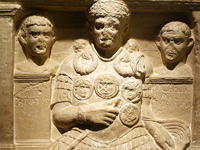
RESOURCES
This article uses material from the Wikipedia article "Battle of the Teutoburg Forest (9 AD)", which is released under the Creative Commons Attribution-Share-Alike License 3.0.
© Stories Preschool. All Rights Reserved.
